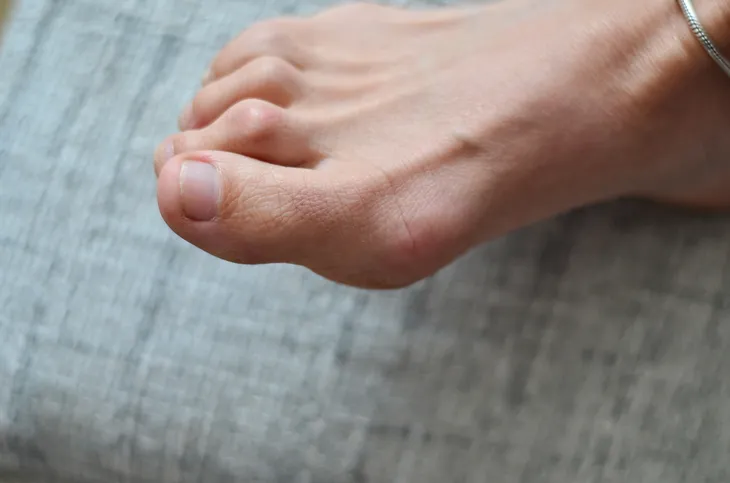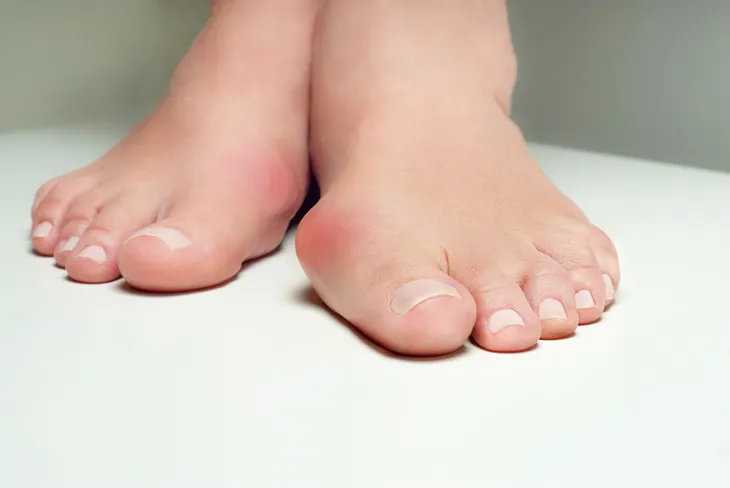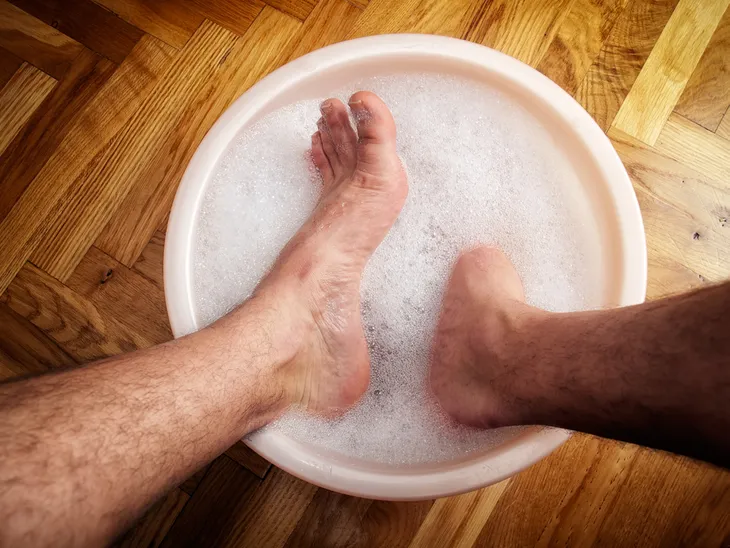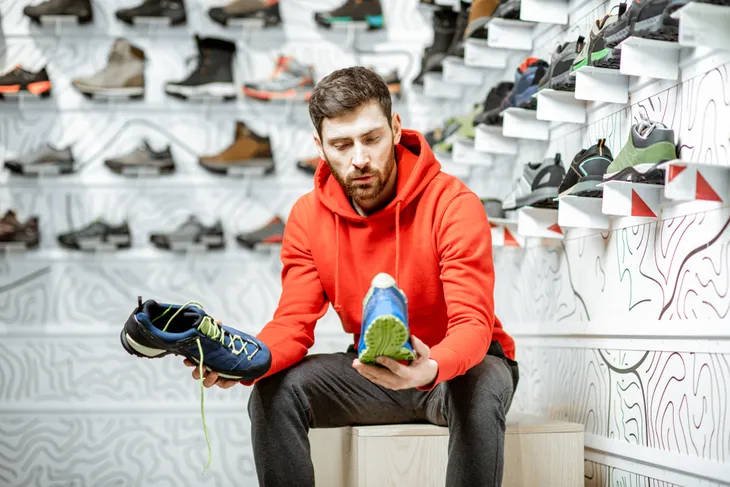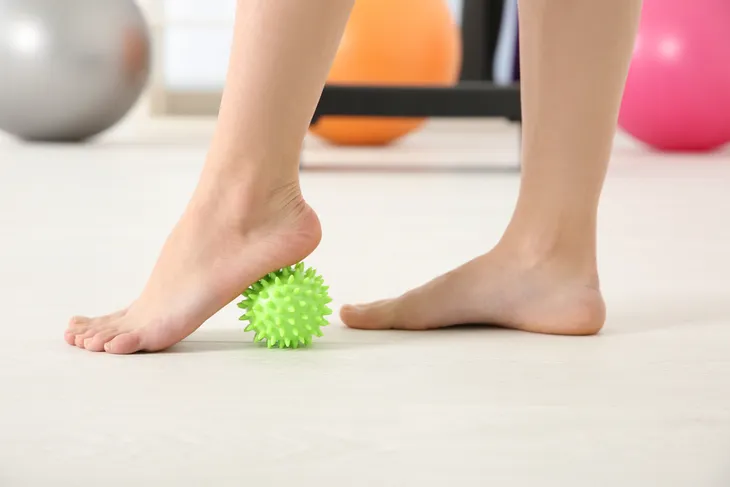- Bunions are a common foot problem that affects 1 in 3 Americans.
- Not only are they unsightly but they can be quite painful too.
- If you’re at risk of developing bunions, take care of your foot health to try and prevent them from forming.
A bunion is a bump that forms on the base of your big toe joint. They’re one of the most common foot problems, especially among older adults. In fact, the Cleveland Clinic says 1 in 3 Americans have bunions. While they often run in families, certain factors can increase your risk of developing them.
Now you might be wondering is there a way to prevent them from forming in the first place? Let’s find out! Follow along as we take a look at what causes bunions and what you can do to prevent them from developing.
What Causes Bunions?
While there are many theories, the Mayo Clinic says the exact cause of bunions is unknown. That said, researchers believe factors like genetics or deformation present at birth can play a large role in the development of bunions. Foot injuries or stress may also play a role.
Another theory is that bunions develop from wearing poor-fitting, tight shoes, however, more research is still needed to confirm this. What researchers do know for sure is that bunions develop gradually so it’s important to be on the lookout for the signs that you’re developing one.
How to Prevent Bunions
Certain factors may increase your risk for bunions. So the first step is getting informed to find out if you’re at risk.
You may be at risk for bunions if you have a family history or inflammatory disease (such as rheumatoid arthritis). You may also have an increased risk if you have an occupation that requires you to be on your feet a lot or if your foot isn’t properly aligned in your shoes.
If you’re at risk for bunions you’ll want to do what you can to prevent them from developing. Luckily, there are a few effective strategies that may decrease your risk. Let’s take a look at these next
Maintain a Healthy Weight
Maintaining a healthy weight is important for your overall health. It helps reduce your risk for heart disease, high blood pressure, stroke, and diabetes, and it turns out, a healthy weight may help prevent bunions too.
Healthline explains, “If you are overweight, your foot and big toe joint are under more pressure than they need to be.” This added pressure may cause a bunion to develop or if you already have a bunion it can cause it to become inflamed and sore. Talk to your doctor to find out what a healthy weight is for you. Your doctor can also provide healthy strategies to help you lose weight if necessary.
Pamper Your Feet
In case you need another reason to pamper your feet, add preventing bunions to the list! When your feet are feeling tired and sore, soak them in a warm bath with Epsom salts. Healthline also recommends applying moisturizer regularly to prevent your feet from drying out.
Another great way to take care of your feet is to have someone massage them occasionally. Perhaps you can splurge and book a professional massage.
Invest in Properly Fitting Shoes
Another important part of taking care of your feet is investing in and wearing properly fitting shoes. Shoes that are uncomfortable and tight can produce blisters, aggravate structural problems, and induce inflammation. The best type of shoe to prevent bunions is one that supports your foot.
Healthline says to look for shoes that are a little loose on your foot, have a wide toe box, and provide good arch support. The source also notes that lace-up shoes are better than slip-on shoes because they prevent your foot from moving forward with every step (which can put pressure on your big toe joint).
What to Know About High Heels
Some people believe that high heels cause bunions and suggest you should forgo wearing them forever. However, the Podiatry Associates explains that high heels do not cause bunions. That said, high heels can still aggravate the foot as they force your feet into an unnatural angle and they put pressure on the big toe joint.
So with this in mind, if you’re at risk for bunions (or if you already have one), you should only wear high heels occasionally. The source also suggests wearing heels that are 2-inches or less. Block heels, wedges, and platforms are also better options as they distribute your weight more evenly across your foot.
When to Shop for Shoes
If you’re at risk for bunions, it’s especially important to invest in good-fitting shoes but many sources suggest the time of day you shop matters. The best time to shop for shoes is in the afternoon or evening because your feet naturally expand and swell throughout the day.
Harvard Health also provides additional tips for shoe shopping, such as wearing the same type of socks you intend to wear with the shoes. The source also says you should stand in both shoes and walk around in them to ensure they feel comfortable. There should be at least a quarter to half an inch of space between your longest toe and the end of the shoe. You can also ask a sales associate to measure your feet. Shop for whichever foot is bigger because sometimes one foot may be slightly longer or wider.
Consider Inserts or Orthotics
Another way you can support your foot health and prevent bunions is by investing in inserts or orthotics. Inserts can be purchased without a prescription and provide cushion and support. They’re often made of materials like foam, gel, or plastic. One con of inserts is that they’re not custom-made for your feet, so while they can provide extra comfort, they won’t help correct foot problems, explains WebMD.
Orthotics, on the other hand, often require a prescription, especially if they’re custom-made. Like inserts, you wear orthotics inside your shoe to help “correct biomechanical foot issues such as problems with how you walk, stand, or run,” explains the source. They can also help ease foot pain. Not everyone will need a prescription orthotic, so it’s best to talk to a podiatrist for their recommendation.
Manage Rheumatoid Arthritis
Rheumatoid arthritis (RA) is one of the most common types of arthritis. It’s an autoimmune disease that causes joint inflammation and it can affect many joints in your body, including your feet. It can even contribute to the development of bunions.
RA can cause “your body to mistakenly attack the lining of your big toe joint, contributing to the bunion,” explains the Vittori Foot Clinic. This is why it’s important to manage your arthritis. Be sure to work with your medical team to identify your RA triggers and then do your best to avoid them. It’s also vital that you follow your treatment plan closely.
Rest Your Feet
Everyone should take time to rest their feet, but it’s especially important if you’re at risk for bunions. Standing for long hours can put added pressure on your feet and if you’re wearing poor-fitting shoes, it can make the situation worse.
If you have to be on your feet all day, do your best to rest your feet for a few minutes throughout the day to relieve tension and pressure. Removing your shoes during these breaks to allow your feet room to breathe is also a good idea.
Strengthen Your Feet
While you may spend time at the gym strengthening your legs, abs, and biceps, have you ever thought about strengthening your feet? Cincinnati Foot and Ankle Care says it turns out that stronger feet are better at handling stress and pressure from your weight which may help prevent bunions. So, how can you strengthen your feet exactly?
There are a variety of exercises you can try such as picking up objects using your toes. Try placing a bunch of small objects on the floor and then in a seated position, use your toes to pick up each item and drop them into a container. You can also strengthen your feet by rolling a ball under your foot. Put pressure on the ball and roll it along the length of your foot for a few minutes.
Finally, you can also try stretching your feet. Start by pointing your toes and then curl them as far as they will go and then relax. Try to repeat this 10 times with each foot. Talk to a podiatrist for more effective exercises.
Look for Changes in Your Feet
While this tip may sound simple, it can really go a long way. It’s easy to neglect our feet but keeping a watchful eye can help you catch the subtle signs of a bunion early. Early signs include pain, swelling, and redness in your big toe joint.
The Cleveland Clinic says another sign of a bunion is an inability to bend the big toe or pain when you try to bend it. You should also be on the look for signs of hammertoes or numbness in the big toe. If you think a bunion may be forming, or you notice any changes in your feet, contact a podiatrist for a proper diagnosis and treatment plan.

